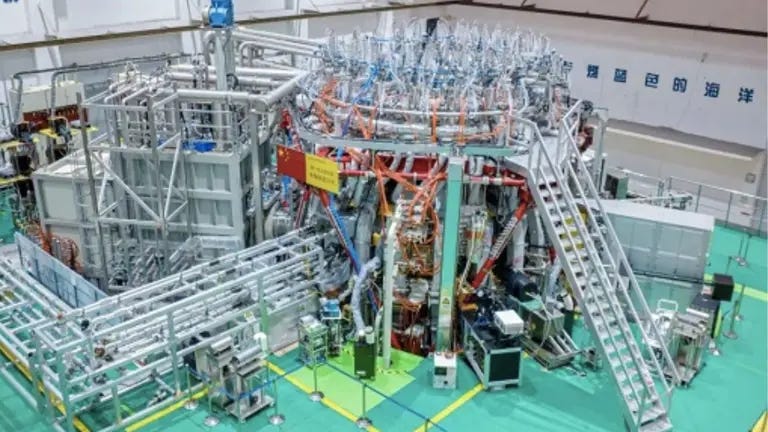Innovation Bites: Renewable Energy On the March
2024 Was a Peak Year, Data Centers Are Improving And More Fusion
This week’s climate innovation rundown is all good news—which we all need right now. Let’s take a look:
a/ Renewable Energy Surges
Looking for a reason to finally feel good about 2024? How about this:
Renewable energy production—both in relative and absolute terms—set new records in 2024! Renewable energy now accounts for 40.9% of global electricity production. Renewable energy grew a whopping 49% from its previous peak in 2022.
That’s right—despite the surging demand for power from AI data centers running, Bitcoin miners and other power-intensive activities, renewable energy was able to capture a larger percentage of the power market.
Best of all, what’s the fastest growing segment? Solar. From the study’s authors:
“Solar power has become the engine of the global energy transition,” said Phil MacDonald, managing director at Ember, the energy think tank that conducted the study. “Paired with battery storage, solar is set to be an unstoppable force. As the fastest-growing and largest source of new electricity, it is critical in meeting the world’s ever-increasing demand for electricity.”
The report also shows that renewable power production is set to outstrip demand—leading to a permanent decline in fossil fuel usage. Maybe 2024 wasn’t entirely a dumpster fire after all?
Read more about the 2024 data here.
Here’s the original Ember study.
a’/ A Bonus Solar Innovation
Traditional solar panels have a fatal flaw — they’re opaque, making them really bad windows.
Well, no longer!
Scientists at Tohoku University, led by Toshiaki Kato, developed a super-thin solar panel that’s only a few atoms thick, making it almost transparent, then paired it with the transparent conductive material used in phone screens.
The resulting solar panel is a 1,000x improvement on prior attempts—and about as efficient as a traditional, opaque solar panel.
The applications are vast—literally any place glass is used. Think: windows in buildings, cladding for skyscrapers, car windows… even your future FitBit or iPhone screen.
b/ More Efficient AI Datacenters?
Staying on the topic of electrical supply and demand—it’s well-documented that AI applications, and generative AI models in particular, are huge consumers of electricity. But maybe that’s just because the hardware the models currently run on isn't optimized for AI?
Researchers recently at Tsinghua University in China recently developed a chipset that runs on light (vs electricity) to run AI applications at a fraction of the energy cost of NVIDIA’s H100 chipset. Read more about the research.
And speaking of more efficient datacenters, there are new server innovations that make even Bitcoin mining—a notorious consumer of electricity—more energy efficient.
What’s driving innovation in both use cases? Electricity is a significant operating cost for both AI datacenters and Bitcoin miners, giving both a strong incentive to reduce power consumption.
c/ More Fusion Milestones
The joke in fusion research is that fusion has always been “just 10 years out”—and has been now for 50+ years. The current target for most of the companies in the fusion industry? Early to mid-2030s. Timelines never change.
China is investing heavily in fusion research to meet the needs of their growing economy, and I profiled research in China that had set records for length of a controlled fusion reaction.
Well, the China National Nuclear Corporation just announced that they hit a new record for highest controlled temperature in a reactor—a whopping 210 million degrees Fahrenheit. (In case you’re curious, that’s a little less than 10x hotter than the surface of the sun).
Curious about all the work happening today on fusion technology?
Here’s a good overview on the leading companies in the new fusion industry.
Whenever I see interesting climate and sustainability innovations and trends, I’ll include them in future editions of Innovation Bites.
Subscribe to the Climate Innovator now to ensure you never miss out!






